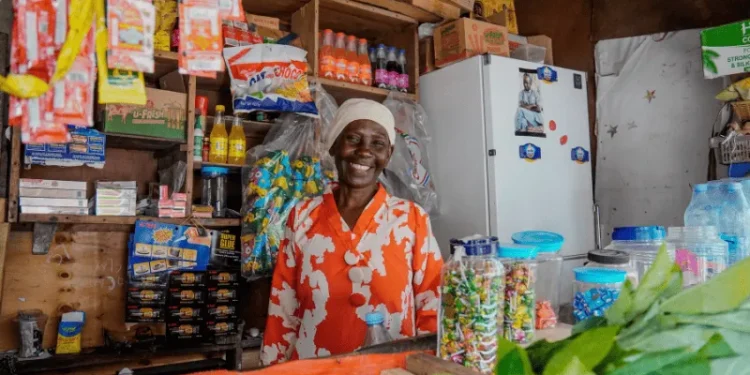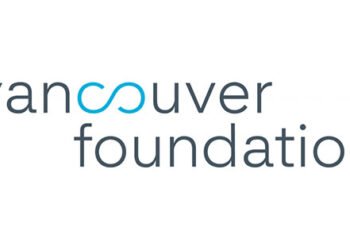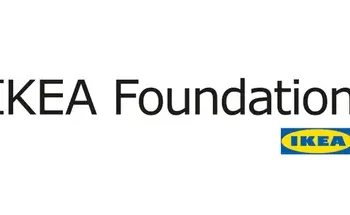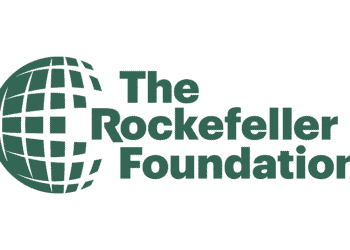What does it take to empower a community and change lives? For BRAC, a global leader in sustainable development, the answer lies in providing opportunities for economic growth, social transformation, and personal empowerment. With a mission to uplift people from poverty, illiteracy, and social injustice, BRAC has been working tirelessly since 1972 to create a better world. Through its microfinance programs, education initiatives, and health services, BRAC has been able to make a significant impact on the lives of millions of people across Asia and Africa, promoting empowerment and sustainable development.
As a pioneer in sustainable development, BRAC has been at the forefront of creating innovative solutions to address the complex challenges faced by communities. With a strong focus on empowerment, BRAC has been able to help people like Laily, who took a loan of 10,000 taka from BRAC Microfinance and transformed her life. Her story is a testament to the power of BRAC’s microfinance program, which has enabled thousands of women to gain economic independence and improve their standards of living, ultimately contributing to sustainable development and empowerment.
Introduction to BRAC and Its Mission
BRAC, a renowned NGO in Bangladesh, has been at the forefront of poverty alleviation efforts since its establishment in 1972. Founded by Sir Fazle Hasan Abed, BRAC has grown to become one of the largest non-governmental development organizations globally, operating in all 64 districts of Bangladesh and 16 other countries across Asia, Africa, and the Americas.
With a strong commitment to social justice, BRAC envisions a world free from all forms of exploitation and discrimination, where everyone has the opportunity to realize their potential. As a leading international nonprofit, BRAC’s key objectives and vision are centered around empowering communities, particularly in Bangladesh, to overcome poverty and achieve sustainable development.
Overview of BRAC’s Founding
BRAC’s founding was a response to the Bangladesh Liberation War, which led to widespread devastation in 1971. The organization’s early efforts focused on emergency relief, but soon transitioned to long-term poverty alleviation strategies, including the launch of its first lending program in 1974.
Key Objectives and Vision
BRAC’s mission is to empower people and communities in situations of poverty, illiteracy, disease, and social injustice. The organization’s key objectives include providing access to education, healthcare, and economic opportunities, with a focus on women’s empowerment and poverty alleviation.
Global Reach and Impact
Today, BRAC reaches over 100 million people across Asia and Africa, with a significant presence in Bangladesh. The organization’s global reach and impact are a testament to its commitment to poverty alleviation and social justice, making it a leading player in the NGO sector.
BRAC’s Core Program Areas
BRAC’s approach to empowerment is multifaceted, focusing on key areas that address the complexities of poverty. By developing solutions in partnership with communities, BRAC builds trust and prioritizes local needs, ensuring that its programs are tailored to the specific challenges faced by each community.
At the heart of BRAC’s strategy are its education initiatives, designed to provide high-quality learning opportunities to marginalized groups, including girls, children with disabilities, and those in remote communities. Through its Play Labs, BRAC facilitates play-based learning for children aged 3 to 5, laying the foundation for future academic success. Additionally, BRAC’s primary schools have consistently outperformed government schools in standardized tests, demonstrating the effectiveness of its education model.
Education Initiatives
BRAC’s education programs reach tens of thousands of learners, with a focus on community-driven approaches that emphasize the involvement of local women as teachers and Play Leaders. This participatory learning environment not only fosters socio-emotional development and resilience in children but also provides opportunities for women to take on leadership roles within their communities.
Health and Family Planning Services
BRAC’s healthcare initiatives are designed to provide comprehensive services that address the unique needs of each community. By integrating health and family planning services with its education and economic development programs, BRAC adopts a holistic approach to empowerment, recognizing that healthcare is a critical component of overall well-being.
Economic Development and Employment
Through its microfinance programs, BRAC provides financial assistance to disadvantaged individuals, enabling them to access economic opportunities and improve their livelihoods. By combining microfinance with vocational education and training, BRAC empowers learners to join the workforce or start their own businesses, contributing to the economic development of their communities.
BRAC’s Innovative Approaches
BRAC continuously innovates, tests, and strengthens its solutions to maximize its effectiveness. This approach has led to the development of sustainable development models that prioritize community engagement and the use of technology in programs. By leveraging technology, BRAC is able to reach more people and provide them with the resources they need to improve their lives.
Sustainable Development Models
BRAC’s sustainable development models focus on long-term solutions that address the root causes of poverty. These models are designed to be adaptable and responsive to the unique needs of each community, ensuring that they are effective and sustainable. Through community engagement, BRAC is able to identify the specific needs of each community and develop targeted solutions that address those needs.
Community-Led Development Strategies
BRAC’s community-led development strategies empower communities to take ownership of their development. By providing training, resources, and support, BRAC enables communities to identify and address their own needs, leading to more sustainable and effective solutions. This approach also fosters community engagement and participation, ensuring that development efforts are inclusive and equitable.
Use of Technology in Programs
The use of technology in BRAC’s programs has been instrumental in enhancing its impact. From mobile health services to digital financial inclusion, technology has enabled BRAC to reach more people and provide them with the services they need. By leveraging technology, BRAC is able to streamline its operations, reduce costs, and improve the efficiency of its programs, ultimately leading to more sustainable development and community engagement.
BRAC’s Contribution to Women’s Empowerment
BRAC believes in building a world that works for all of us, emphasizing the importance of women’s empowerment. This mission is reflected in its various programs and initiatives, which aim to address the unique barriers women face. By providing access to microfinance programs, leadership training, and advocacy and awareness campaigns, BRAC is helping women overcome inequality and discrimination.
Empowering Women through Economic Opportunities
Microfinance programs have been instrumental in empowering women, providing them with access to financial services and resources. This has enabled women to start their own businesses, invest in their families, and improve their overall well-being. Leadership training for women has also been a key component of BRAC’s programs, helping women develop the skills and confidence they need to take on leadership roles in their communities.
Addressing Social and Cultural Barriers
BRAC’s advocacy and awareness campaigns have helped to address social and cultural barriers that prevent women from achieving their full potential. By working with communities to change attitudes and behaviors, BRAC is helping to create a more supportive environment for women’s empowerment. Through its programs, BRAC is promoting women’s empowerment, which is critical for achieving sustainable development and reducing poverty.
As a result of BRAC’s efforts, women are gaining greater control over their lives, making informed decisions about their health, education, and economic well-being. This, in turn, is having a positive impact on their families and communities, contributing to a more equitable and just society. By supporting women’s empowerment, BRAC is helping to create a brighter future for all.
Poverty Alleviation Efforts by BRAC
BRAC’s approach to poverty alleviation is multifaceted, focusing on Skills Development and Vocational Training to empower individuals and communities. By providing access to education and job training, BRAC enables people to acquire the skills needed to secure better-paying jobs and improve their economic prospects.
According to recent data, 1 in 20 people in Bangladesh live in extreme poverty, earning less than USD 2.15 per day. BRAC’s poverty alleviation efforts have been successful, with 95% of people graduating out of extreme poverty through their Graduation approach. This approach combines income generation, livelihood diversification, healthcare access, and financial literacy to provide a comprehensive solution to poverty.
BRAC’s Vocational Training programs have also shown significant impact, with participants experiencing a notable increase in annual earnings and hours devoted to stable, productive work. By investing in Skills Development and Vocational Training, BRAC is helping to break the poverty trap and create a more sustainable future for individuals and communities.
BRAC’s poverty alleviation efforts are a testament to the power of innovative and sustainable approaches to addressing extreme poverty. By combining Skills Development, Vocational Training, and other comprehensive interventions, BRAC is making a lasting impact on the lives of millions of people around the world.
Measuring Impact: BRAC’s Success Metrics
BRAC continuously innovates and strengthens its solutions to maximize effectiveness, with a strong focus on Data Collection and Analysis. This approach enables the organization to assess its Impact Analysis and make informed decisions. By leveraging data, BRAC can identify areas of improvement and optimize its programs for lasting Transformation.
With operations in 6 countries, BRAC has established a robust framework for measuring impact. The organization’s commitment to data-driven decision-making is evident in its extensive outreach, having served 745,295 clients and established 523 branches. Notably, 96% of clients are women, and 38% are youth and young adults, demonstrating BRAC’s focus on empowering marginalized groups.
As BRAC continues to grow, it is essential to track progress and adjust strategies accordingly. By conducting regular impact surveys, the organization can gauge the effectiveness of its programs and make data-informed decisions to drive meaningful Transformation.
BRAC’s dedication to Impact Analysis is reflected in its improved Net Promoter Score (NPS) and increased client satisfaction. The organization’s ability to adapt and evolve its programs has resulted in a significant increase in clients reporting improved quality of life. By prioritizing Data Collection and Analysis, BRAC can ensure that its programs are tailored to meet the evolving needs of its clients, ultimately driving lasting Transformation and positive change.
BRAC’s Partnership and Collaboration
BRAC’s approach to Partnership and Collaboration is a key factor in its success. By working with governments, other NGOs, and corporate partners, BRAC is able to leverage resources and expertise to enhance its impact and contribute to Sustainable Development. This collaborative approach enables BRAC to reach more people and have a greater impact on the communities it serves.
Through its Partnership and Collaboration efforts, BRAC is able to mobilize resources and support from a variety of stakeholders. This includes working with governments to implement programs and policies that support Sustainable Development, as well as partnering with other NGOs to share knowledge and expertise. Corporate partnerships also play a critical role, providing funding and resources to support BRAC’s programs and initiatives.
Collaborations with Governments
BRAC’s collaborations with governments are a critical component of its Partnership and Collaboration strategy. By working with governments, BRAC is able to gain a deeper understanding of the needs and challenges facing the communities it serves, and to develop programs and initiatives that are tailored to those needs.
Engagement with Other NGOs
BRAC’s engagement with other NGOs is also an important aspect of its Partnership and Collaboration approach. By working with other NGOs, BRAC is able to share knowledge and expertise, and to develop new and innovative solutions to the challenges facing the communities it serves.
Corporate Partnerships for Sustainable Development
BRAC’s corporate partnerships are a key factor in its ability to contribute to Sustainable Development. By working with corporate partners, BRAC is able to access funding and resources that support its programs and initiatives, and to develop new and innovative solutions to the challenges facing the communities it serves.
Challenges Faced by BRAC
BRAC, having supported over 100 million people worldwide, faces numerous challenges in its mission to empower communities. Navigating complex Socio-political Landscapes is crucial, as it directly impacts the organization’s ability to implement effective programs.
One of the significant hurdles BRAC encounters is Cultural Barriers. These barriers can hinder the organization’s efforts to reach and support marginalized communities, making it essential to develop culturally sensitive approaches. Furthermore, securing and managing Funding is a persistent challenge, as it directly affects the scope and sustainability of BRAC’s initiatives.
Addressing These Challenges
BRAC has demonstrated resilience and adaptability in overcoming these challenges. By tailoring its programs to address specific Cultural Barriers and navigating the Socio-political Landscapes of the regions it operates in, BRAC ensures its interventions are effective and sustainable. Moreover, strategic Funding and resource allocation enable the organization to expand its reach and deepen its impact.
The Future of BRAC
As BRAC looks to the future, its strategic plans for expansion reflect its unwavering commitment to empowering communities and driving lasting social change. The organization aims to reach at least 250 million disadvantaged women, youth, and people living in poverty within the next 10 years, leveraging innovative solutions and a focus on sustainability.
BRAC’s innovative approaches on the horizon include harnessing the power of technology to scale its programs and enhance their impact. The organization is also exploring new partnerships and collaborations that will unlock funding and resources to support its ambitious goals. Central to BRAC’s vision is a steadfast commitment to sustainability, ensuring that the transformative change it catalyzes endures for generations to come.
BRAC’s proven track record, with 47 years of experience in Bangladesh and 17 years of international expansion, positions it as a global leader in sustainable development. As the world races to achieve the Sustainable Development Goals by 2030, BRAC’s strategic plans to reach at least 30% of participants with multiple interventions will be crucial in driving meaningful and lasting impact. With a focus on empowering youth, particularly young women, BRAC is poised to unlock the human potential that will shape the future of the Global South.
Strategic Plans for Expansion
BRAC aims to expand its reach, with plans to operate in 11 countries in Africa and Asia, including Bangladesh, Afghanistan, the Philippines, Nepal, Myanmar, Liberia, Sierra Leone, South Sudan, Tanzania, Uganda, and Rwanda.
Innovations on the Horizon
BRAC is exploring new technologies and partnerships to enhance the scale and impact of its programs, with a focus on data-driven decision-making and digital solutions that empower communities.
Commitment to Sustainability and Social Change
At the heart of BRAC’s vision lies a steadfast commitment to sustainable development and social change, ensuring that the transformative impact of its programs endures for generations to come.
FAQ
What is BRAC and what is its mission?
BRAC is a non-governmental organization (NGO) founded in 1972 in Bangladesh, with a mission to empower people and communities in situations of poverty, illiteracy, disease, and social injustice. BRAC is committed to creating opportunities for people to realize their potential and drive sustainable development.
What are BRAC’s key objectives and its global reach?
BRAC’s key objectives include poverty alleviation, social justice, and empowering marginalized communities. The organization has a global presence, operating in 11 countries across Asia and Africa and impacting millions of lives.
What are BRAC’s core program areas?
BRAC’s core program areas include education initiatives, health and family planning services, and economic development and employment opportunities. These programs are designed to address the multidimensional aspects of poverty.
How does BRAC approach innovation and sustainability?
BRAC is known for its innovative approaches, including sustainable development models, community-led development strategies, and the use of technology in its programs. These strategies are aimed at enhancing the organization’s impact and ensuring the long-term sustainability of its initiatives.
How does BRAC empower women?
BRAC’s efforts in empowering women include microfinance programs, leadership training, and advocacy campaigns. These initiatives focus on addressing gender inequality and promoting women’s economic, social, and political empowerment.
What are BRAC’s strategies for poverty alleviation?
BRAC’s poverty alleviation strategies include targeting extreme poverty, skills development, and vocational training. The organization’s success stories from beneficiaries demonstrate the impact of these innovative and sustainable approaches.
How does BRAC measure the impact of its programs?
BRAC has a rigorous approach to impact analysis, involving data collection, long-term and short-term impact assessment, and case studies of transformation. This data-driven decision-making process helps the organization to continuously improve and enhance the effectiveness of its programs.
How does BRAC collaborate with partners?
BRAC engages in strategic partnerships with governments, other NGOs, and corporate entities to enhance its impact and contribute to sustainable development. These collaborations enable BRAC to mobilize resources and support from a diverse range of stakeholders.
What challenges does BRAC face, and how does it overcome them?
BRAC navigates complex socio-political landscapes, addresses cultural barriers, and manages funding and resource allocation challenges. The organization’s resilience and adaptability allow it to overcome these obstacles and ensure the continued effectiveness and sustainability of its programs.





